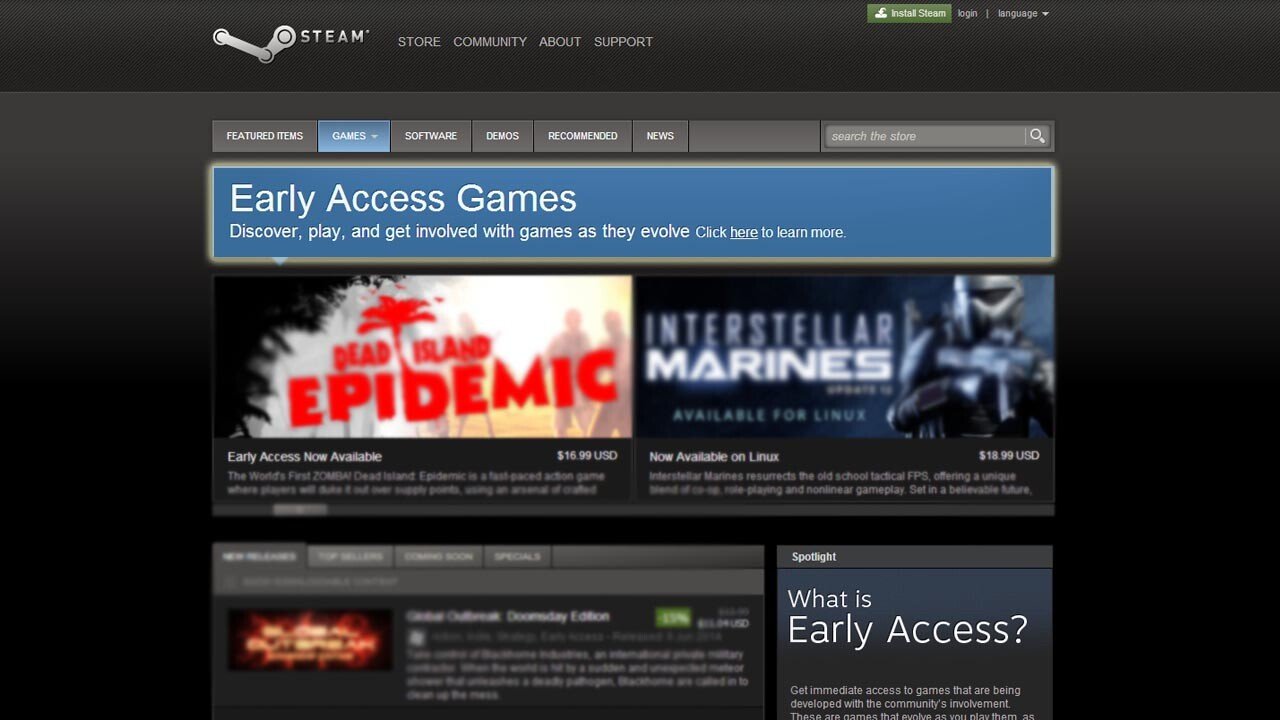I (p)reviewed two unfinished games this week, which is pretty unusual. Typically, reviewing a game involves playing and offering an opinion on a finished product—one that isn’t likely to change unless a few downloadable patches are offered down the line to address minor problems. Trying to offer a critical look at games that are still in active development is a bit trickier. How do you account for features that sound promising, but are still missing? How do you try to recommend the early stage of a greater vision? It’s possible to takes these issues into account and still figure out whether an unfinished game is worth a player’s time or not, but reviewing these titles is definitely harder than complete ones.
I don’t think the kind of problem that this represented is going away. Unfinished games—whether offered through Steam’s Early Access program or as independent alpha and beta builds—will very likely continue to play a large role in the medium. Even though a promising title may not be released in its final state it may still look appealing to players, after all. When I first heard of SuperCrit’s dinocentric survival simulator The Stomping Land it grabbed my attention on the strength of its unique premise and interesting mechanics. Given that the game is currently among Steam’s bestsellers, I know I wasn’t alone. Sure, The Stomping Land may not be finished yet, but its developer is charging money for it and potential players should have access to a review that lets them know whether or not the game is worth their time. Aside from the fact that these titles are works in progress, everything else about them—from their price tags to the role they play in videogame criticism—are similar to traditional releases. That alone makes it seem like we should reconsider the thinking around unfinished games.
Early Access gets a lot of flak from game critics and fans alike. Opponents of the release program have problems with the concept of paying for titles that are still being worked on—it may take years to actually implement the entire feature-sets they promise. This is completely understandable. There is always the risk that a developer might walk away from an in-progress game, leaving players without a finished experience despite having already paid for it. There’re also the teams that sell buggy or technically broken titles without any real hope of being able to fix them. I’d argue that, despite these very real problems, concentrating entirely on the negative aspects of Early Access is a bit too cynical.
Even though I’m someone who would almost always rather wait to play a game that is complete instead of jumping in early, the idea of buying into an unfinished release still makes a lot of sense. Some titles may launch in rough shape, but others—like Endnight Games’ The Forest— are already perfectly playable (despite missing a few features) as soon as they’re available for purchase. If the concept of an Early Access game is enticing, buying into it can be a good idea for player and developer both. The problem comes from the kind of expectations we bring to these games. Head to the Steam forum for a title like The Stomping Land, and you’ll find a split between players who are discussing features or their opinion on how the game is shaping up and those who wish to complain that the game they bought is unfinished. Reading these comments makes it clear that, for many, Early Access just doesn’t make sense as an idea.
Most of those who have read the developer comments that are provided on an Early Access’ game’s storefront make their purchase with realistic expectations, though. Yes, features may be missing and there may be plenty of glitches in these titles, but players who enter into unfinished games understanding this are far more likely to enjoy their experience because their expectations are set appropriately. For them, Early Access is a bit like making an investment. Not unlike the risks involved with pledging to a Kickstarter project, buying an unfinished game is a vote of confidence. It helps developers to fund the work that goes into their games and allows players to watch the progress from early stages to final product. Not everyone is comfortable spending their money this way, but that doesn’t mean that Early Access isn’t an unique and valuable program regardless.
While (p)reviewing two Early Access games, I gave a lot of thought to the release practice. I went from someone who essentially ignored unfinished games to one who is more likely to pay attention to them in the future. I was won over by the interesting prospect of experiencing the completion of a game through firsthand play. While still understanding the complaints levied at Early Access and similar programs, I think the loss of this practice would be a real shame.




